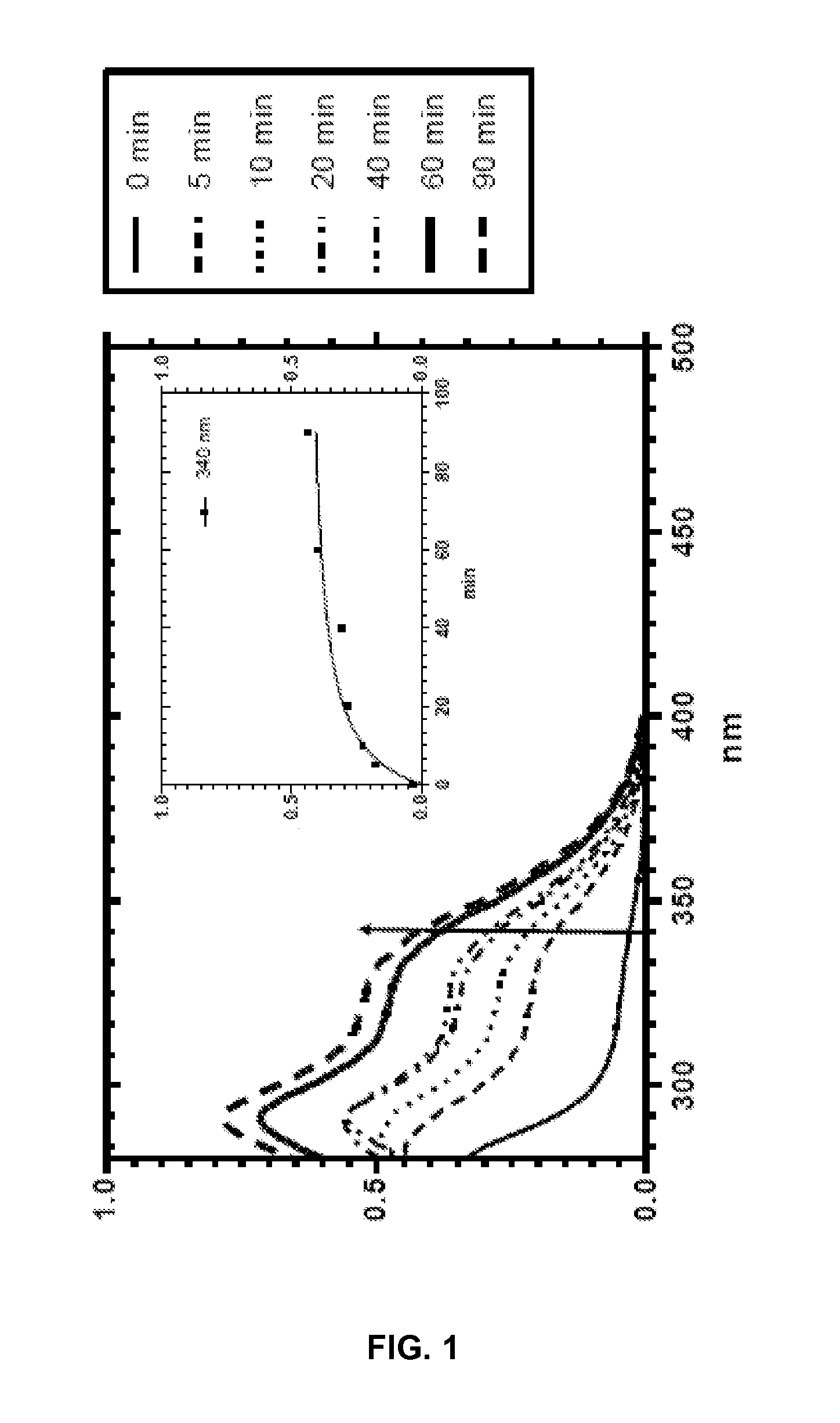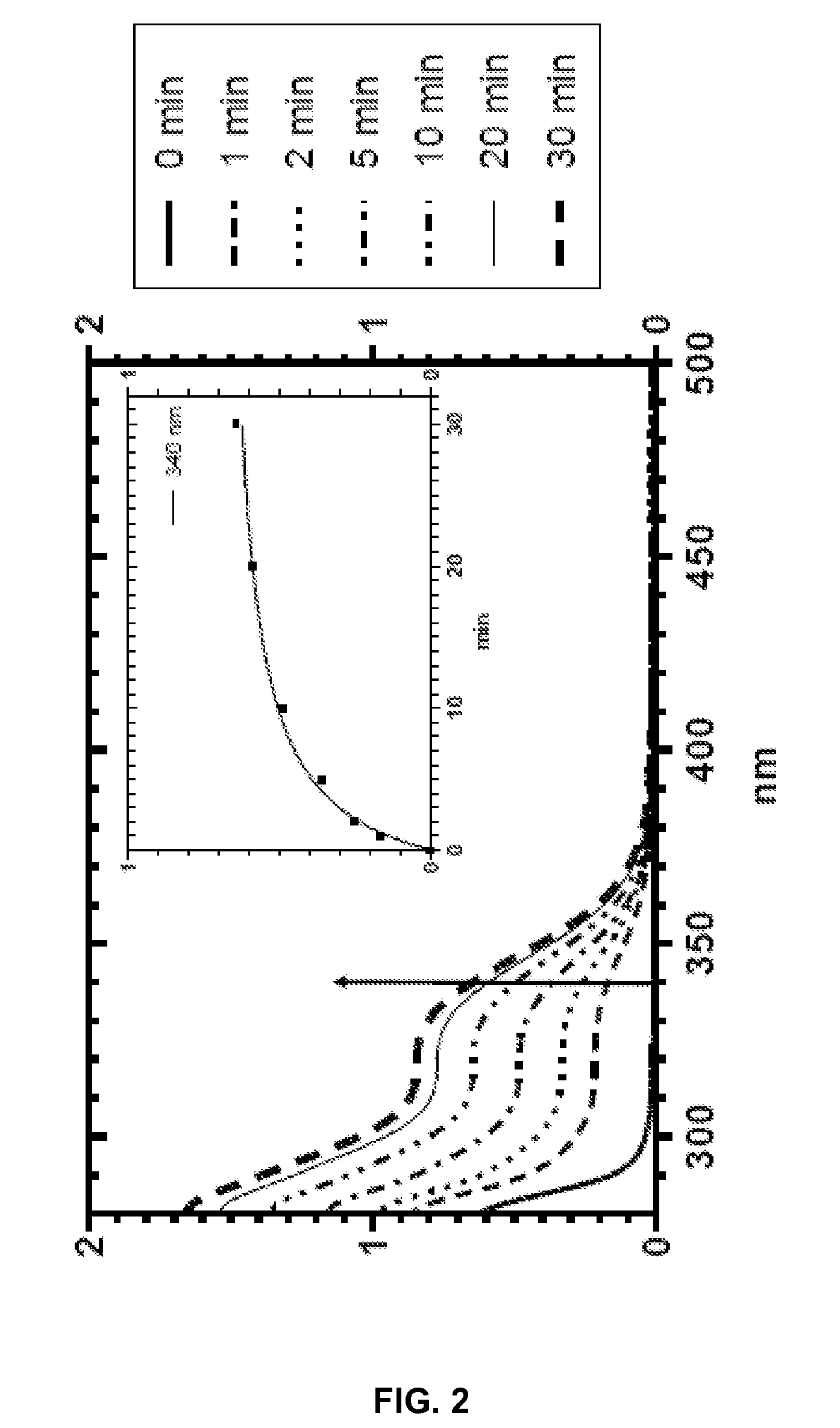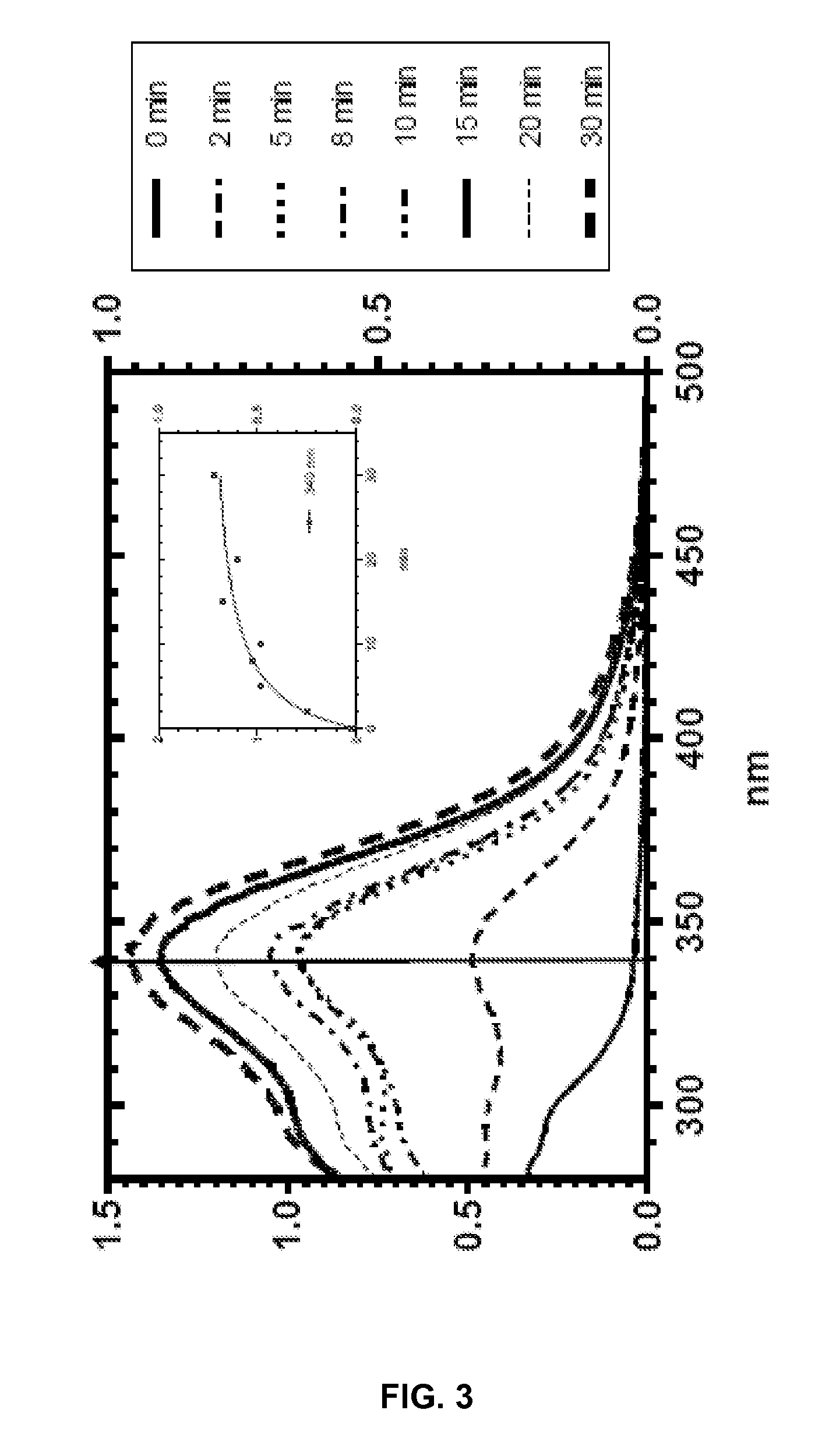Silyl polymeric benzoic acid ester compounds, uses, and compositions thereof
a technology of benzoic acid ester and silenol, which is applied in the field of organic silica polymer, can solve the problems of increasing exposure to damaging sunlight, affecting the safety of sunscreen users, and affecting the safety of skin, so as to achieve a safer profile both for the user and the environmen
- Summary
- Abstract
- Description
- Claims
- Application Information
AI Technical Summary
Benefits of technology
Problems solved by technology
Method used
Image
Examples
example 1
3-(3-(Triethoxysilyl)propylcarbamoyloxy)phenyl benzoate
[0181]
[0182]Resorcinol monobenzoate (866 mg, 4.043 mmol), triethylamine (0.56 mL, 4.043 mmol) and triethoxy (3-isocianatepropyl)silane (1 mL, 4.043 mmol) were dissolved in 25 mL of chloroform. The solution was refluxed for 12 hours, cooled and the solvent was removed under reduced pressure. The obtained crude was washed with pentane, thus affording 1.864 g (4.041 mmol, yield=99%) of a yellowish oil corresponding to the compound of the title (HPLC purity=99%).
[0183]1H-NMR (CDCl3, 400 MHz): 8.19 ppm (dd, 2HAr), 7.63 ppm (td, 1HAr), 7.50 ppm (t, 2HAr), 7.25 ppm (t, 1HAr), 6.75 ppm (m, 3HAr), 5.81 ppm (s, 1H, NH), 3.84 ppm (q, 3×2H, O—CH2—CH3), 3.29 ppm (t, 2H, HN—CH2—CH2), 1.73 ppm (qu, 2H, CH2), 1.22 ppm (t, 3×3H, O—CH2—CH3), 0.67 ppm (qu, 2H, Si—CH2)
[0184]13C-NMR (CDCl3, 400 MHz): 165.32, 156.82, 151.76, 133.66, 130.18, 130.09, 129.40, 128.57, 113.66, 113.21, 109.35, 70.08, 58.50, 45.36, 25.07, 18.24, 7.53
[0185]IR (melted film): ...
example 2
3-(3-(Triethoxysilyl)propylamino)phenyl benzoate and
example 3
3-(Bis(3-(triethoxysilyl)propyl)amino)phenyl benzoate
[0186]
a) 3-Nitrophenyl benzoate preparation
[0187]3-Nitrophenol (1.716 g, 12.346 mmol) and triethylamine (1.6 mL, 12.346 mmol) were dissolved in 50 mL of dichloromethane. The solution was shaken 30 minutes at room temperature. Benzoyl chloride (1.43 mL, 12.346 mmol) was added drop by drop and the resulting solution was shaken at room temperature until full conversion as determined by thin-layer chromatography. Carbonated water (20 mL) was added three times. The organic phase was dried over magnesium sulfate, filtered and the solvent was removed under reduced pressure, thus affording 2.7080 g of a white solid corresponding to 3-nitrophenyl benzoate (11.144 mmol, yield=90%).
[0188]1H-NMR (CDCl3, 400 MHz): 8.21 ppm (dd, 2HAr), 8.16 ppm (m, 2HAr), 7.68 ppm (tt, 1HAr), 7.61 ppm (m, 2HAr), 7.53 ppm (t, 2HAr)
b) 3-Aminophenyl benzoate preparation
[0189]3-Nitrophenyl benzoate (2.7080 g, 11.144 mmol) and tin (II) chloride dihydrate (12.564 g, ...
PUM
| Property | Measurement | Unit |
|---|---|---|
| size | aaaaa | aaaaa |
| size | aaaaa | aaaaa |
| pH | aaaaa | aaaaa |
Abstract
Description
Claims
Application Information
 Login to View More
Login to View More - R&D
- Intellectual Property
- Life Sciences
- Materials
- Tech Scout
- Unparalleled Data Quality
- Higher Quality Content
- 60% Fewer Hallucinations
Browse by: Latest US Patents, China's latest patents, Technical Efficacy Thesaurus, Application Domain, Technology Topic, Popular Technical Reports.
© 2025 PatSnap. All rights reserved.Legal|Privacy policy|Modern Slavery Act Transparency Statement|Sitemap|About US| Contact US: help@patsnap.com



